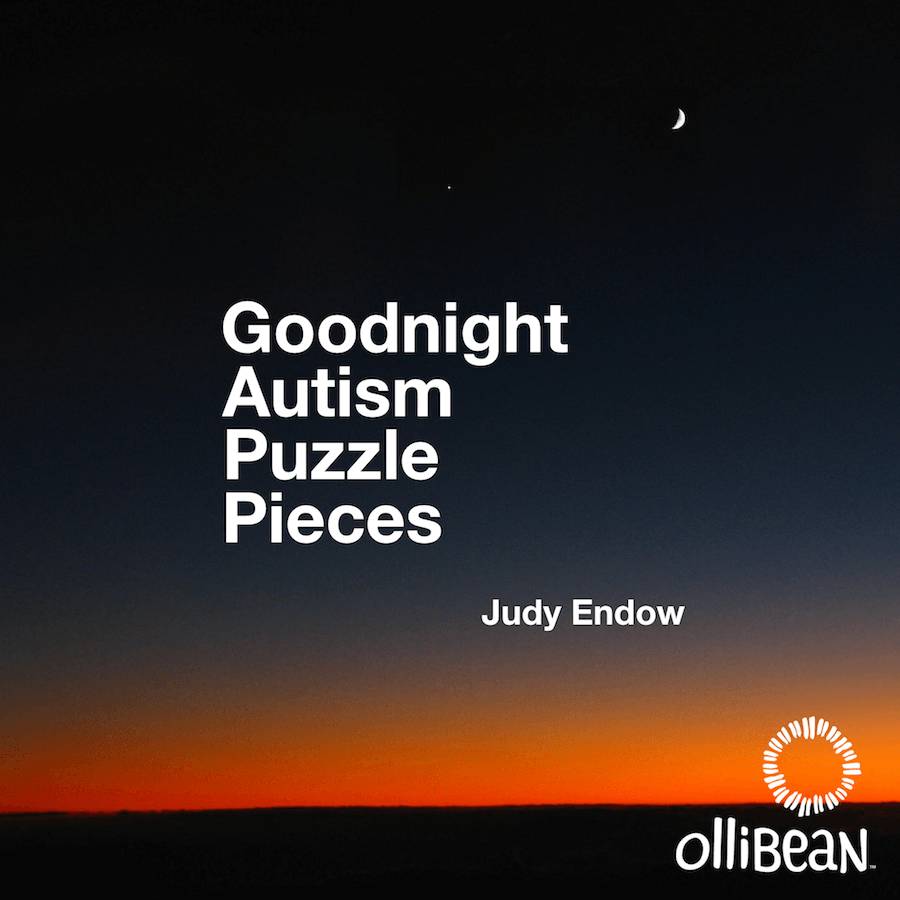 You may like lighting it up blue or using puzzle pieces as a symbol of autism awareness.
You may like lighting it up blue or using puzzle pieces as a symbol of autism awareness.
I personally no longer like either of these things for lots of reasons and I post various blogs and articles about these topics in social media venues.
My opinion, even though it may differ from yours, does NOT mean my autism is preventing me from understanding your point of view. It simply means we have different points of view.
Yesterday I had a conversation in social media with a woman who explained all the reasons the puzzle piece symbolism was important to her while I explained all the reasons I no longer like this symbol. It was a very civil discussion until the end when she said, “I’m sorry your autism doesn’t allow you to see my point of view. I will be praying for you. Have a nice evening.” It is only April 3rd and I have already had more than enough of these sorts of conversations.
The truth of the matter is that it really does not matter in 2014 whether we like the puzzle piece symbol for autism or not. It is no longer about personal preference. It also does not matter what the original historic purpose or what any organization’s current intent is for using the puzzle piece. All of these things used to matter, but in 2014, we have a different landscape.
At this point in time because a very good job has been done over the years with autism awareness campaigns we have a new problem. The problem is that one organization gets almost all the autism contributions which in turn means this organization (Autism Speaks) has been able to purchase the most advertising. In fact, in many communities the only public advertising comes from Autism Speaks. This means that Autism Speaks awareness campaigns about autism have become the public perception of autism.
Public Awareness and Autism Puzzle Pieces
Because the puzzle piece is connected with autism, public awareness kicks in when we see the puzzle piece symbol for autism. Regardless the historical or the current facts about the puzzle piece or indeed even our own association and good feelings with the puzzle piece it is important we understand what the puzzle piece has come to mean.
If you want to understand public awareness of autism in 2014 go to a street corner of a busy intersection where you interface with the general public. Start asking John Q. Public to tell you one thing they are aware of about autism. Here are some answers you will get:
- It bankrupts families.
- Kids are ok, but when they grow up they should be put away. Too many of them turn out to be shooters. They have no morals or conscience. The rest of us shouldn’t have to live in fear of them.
- Those kids need to be put on a leash or locked in so they don’t run off and drown. Why don’t their parents watch them better?
- Autism is my worst fear. I don’t think I could handle it if my baby had autism.
- So many people have it – it is all so tragic.
- It’s a mystery. Nobody seems to know what to do about it.
- I think society should have a more Christian attitude about autism. Those unfortunate souls can’t help it. They don’t want to have autism and there is no cure so what are they supposed to do?
- Autism is a good cause. My neighbor had a team for his kid and our family went on that walk to show support. We gave a big donation.
- Wish they could find a way to test for it prenatally. It is a shame autistic kids are brought into the world.
- My insurance premiums are already too high and keep going up. I have to bear the burden of somebody else’s autistic kid. We need a way to prevent this cycle of poor people having autistic kids the rest of us have to pay for.
- Parents are so overwhelmed. I understand why some of them snap and put their poor kids out of their misery.
- Nobody really knows anything about autism. It’s a puzzle.
- I love the blue lights! Go blue!
- I would not subject my family to that kind of thing. If we can’t cure it then we should be merciful and do the Dr. Kevorkian thing. Parents and siblings shouldn’t have to suffer and give up everything for one child afflicted with autism – and those kids aren’t really aware anyway. They don’t have feelings as the rest of us.
- My workplace did autism for our charity last year. It is such a worthy cause!
- Many of us in the autism community have worked very hard on awareness campaigns over the years. For many of us our campaigns were about education, earlier detection, support programs, etc. Even so, the fact remains that today public awareness of autism is tied up with the tragedy and fear-mongering put forth by Autism Speaks. Our puzzle symbol no longer stands for any of the good we personally attach to it and, in fact, has become harmful to the very people we wanted to represent – autistic people.
I no longer use my beautiful quilted puzzle bag I bought long ago at my first autism conference. Today I look fondly at my old white sneakers sporting their muddied autism puzzle shoe laces and remember the day Lori and I served over a thousand brats and hot dogs to the autism walkers – how sore our feet were and how exhausted we were at the end of the day, and yet how pleased we were to have helped a good cause.
That was then. Today it is 2014. Our yesterdays can be fond memories. Our todays must come with the realization of the negative message about autism the general public now associates with the puzzle piece. Any positive programming on behalf of supporting autistics is undermined by use of the puzzle piece logo. In fact, it will be boycotted by autistics – the very people you are trying to serve. All your good explanations about what the puzzle piece means to you will not undo the public perception now associated with the autism puzzle piece.
I have explained to the best of my ability why I have put my puzzle piece items to rest. Their time is over; their usefulness spent. If you cannot understand my explanation perhaps the words of my dear friend and treasured ally will serve you better:
Lee Stickle: “Out of respect for autistics who have asked that the puzzle piece not be used, I will not use it. While I admit I do not understand all the nuances of ASD, I do recognized and respect those who advocate for themselves and others.”

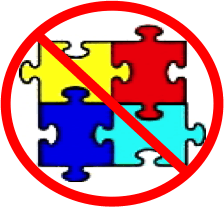
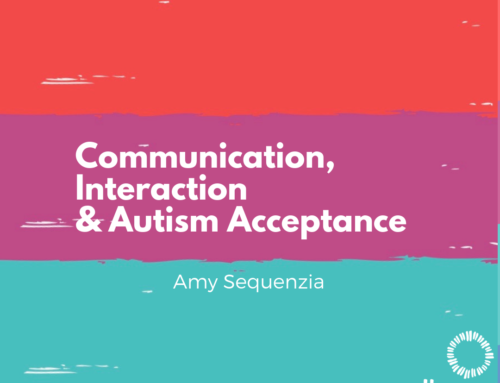
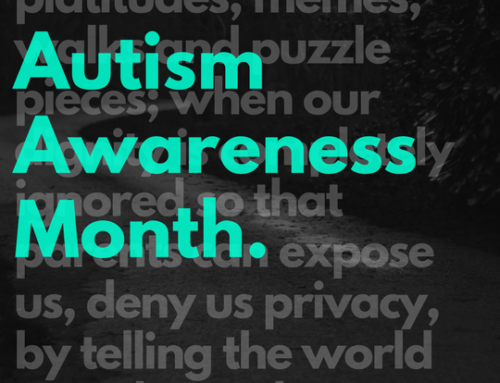

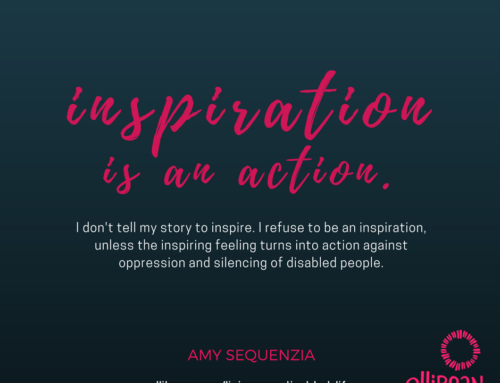
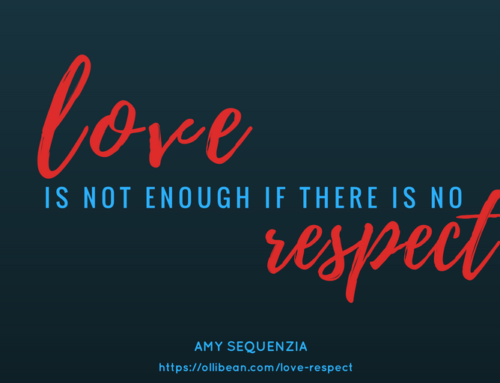
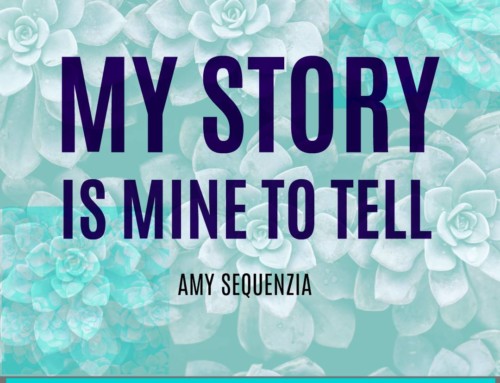
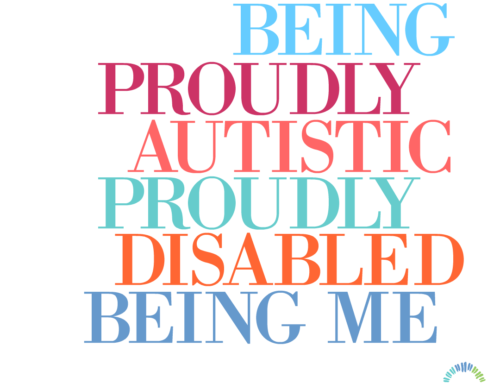
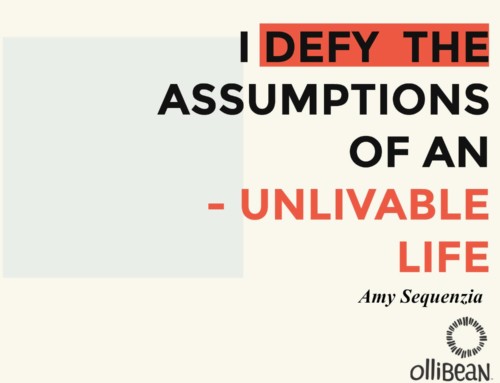
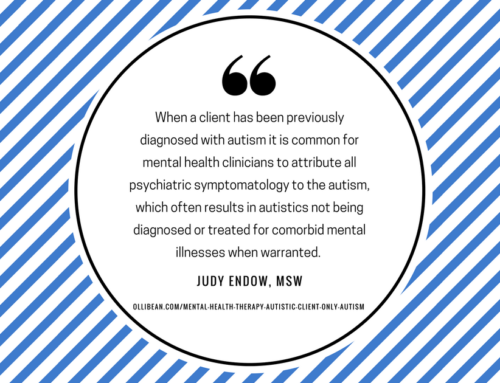


Beautifully stated, Judy! I am retiring my puzzle necklaces and pins.
Oh Judy Endow writes another powerful piece for Ollibean! Beautiful Judy. Thank you for writing this.
I am friend requesting you right now, after seeing this pop up on my friend Jody McGillivray page. If you get a chance please see my page, I am at wits end this morning, because of something I saw come across my status reader. A very innocent organization here in Seatte, WA was forwarding a piece about Obama signing a bill(h.r.2019). But it is now being said by many that it is funding directly to Autism when in fact it was a bill that was signed for a girl that died of brain cancer…….anyways….at this moment this morning I am just wanting to get all 1960s on the government in protest. I am tired of this exploitation and no real action by the government and others during “April Autism Awareness Month……its like the guy at the gas station the other morning, trying to sell me something that cleans my rims….and after I said no really I am not interested, he points to the pink ribbon on the can, and says but we are selling these to benefit breast cancer awareness. Are you frigging kidding me!!! Ugggh so angry this morning. Time to put some music on and zone out a bit.
This is wonderful.
WELL SAID!!
Well stated, Judy. Bye bye puzzle pieces.
How obnoxious of that woman! “Your autism” isn’t preventing you from seeing anything! That person just finds it much easier to think we’re somehow subhuman than to interact with us like they would every other person. Ugh. Is it May yet?
the anti-cure Autism Society of America was actually the ones that invented the puzzle piece symbol, but they are multi-colored. Speaks for some reason decided to take it.
Wait are you kidding? I could not read the hole article cuz I was like what?????I don’t thankfully have puzzle pieces but I will never ever buy one
Wait are you kidding? I could not read the hole article cuz I was like what?????
My biggest pet peeve is that AS makes us feel like autism is a fate worse than death. I’m doing just fine with my autism, thank you.
Judy, thank you for posting this explanation. I find it really helpful and will refer people to this piece for understanding. I’m done with the puzzle pieces too.
Well said, Judy.
Even if I had not come to associate the puzzle piece with Autism Speaks For Normie ________, I have to be brutally honest here. If someone thought a puzzle piece was a fair iconic representation of me, I would feel pretty insulted.
A long time ago, when I stitched together cuts from films to make a compilation that resembled things I felt the autistic people of the world would like to say directly to Autism Speaks For Normie ________, I included one snippet from Saw II. Tobin Bell saying “I am talking. You’re not listening.” That is exactly what the puzzle piece brings to mind.
I am not something to be solved. I am a person with actual hopes, dreams, and most importantly fears. I have lived a lifetime of not being properly listened to, and today when I get the impression that someone is drawing conclusions without having properly listened to what I have said, I get angry. The puzzle piece is a symbol that gives the impression that it is okay to not hear me properly because I am just a puzzle to be solved.
How anyone can expect me to not feel insulted by that is a question for the ages.
I kind of feel bad for people who got the puzzle pieces tattooed. The meaning of a symbol changes, it is important to think of the most original way to say something in body art.
Perhaps we should move beyond awareness to understanding and acceptance
I would love a symbol that represents autism acceptance, as well as the unique, focused, honest, quirky and wonderful qualities we contribute to the world… not just autism “awareness.” You can be aware of a car wreck but that doesn’t make it a positive thing.
Thanks for writing this. Out of respect for you and other autistics I am going to phase out my use of the puzzle pieces. This will be difficult for me because for me the puzzle pieces symbolized learning about autism, my journey to understanding my sons behaviors. Learning the triggers and learning how to teach him to deal with them. Piecing this crazy world that we live in together so that it makes some sense. It has meant that we should not judge a child or a parent because the child is not behaving as “they should”. I find it disgusting that “Autism Speaks” is using it in such a negative way.
Interesting read, definitely gets you thinking and makes alot of sense.
If you save this picture as your profile picture, only the A.S. (Aspie) symbol will show. You can left, and then right click to save it. Otherwise, you may use it as your header with no time limt. It will show your acceptance of Aspergers Syndrome and Autistic Spectrum. This emblem of united pieces is by and for us Aspies. You need not just be BLUE or gold. You can show a spectrum of colors by displaying our spectrum emblem. We are not just a puzzle PIECE, and are not missing anything. We do fit in, and we can SPEAK for ourselves! Let us support ourselves, rather than an NT jigsaw organization that is profiting from pitying us. We are all individuals, and need not have the same letters in our name. Show support for us by proudly displaying our A.S. logo. http://Www.LernerGraphics.com
I don’t agree. I think that the puzzle piece is a good symbol for Autism. It doesn’t mean that we can’t do what anyone else can do. It just means that it’s a little bit harder for us to do. The puzzle piece just signifies that we are different but our difference isn’t really what matters. The Autism puzzle piece wasn’t ever intended to cause a problem between itself and society. We have turned it into a problem because not all of us agree that the puzzle piece should be the symbol for Autism. It’s not a bad thing that you don’t agree. But for those people that don’t agree are just going to have to accept that the symbol for Autism will most likely always be the puzzle piece. As for people’s thoughts and opinions I don’t think somebody would just say that people with Autism shouldn’t exist or they need to be put on a leash or something. I do accept everyone’s thoughts and opinions but mine would have to be not agreeing on this because in my eyes the puzzle piece is perfect. To me it just seems like it’s the best symbol for Autism in any way. Thank you for taking your time to read this I appreciate that very much and I am just voicing my thought and opinion on this. So yeah. :) <3
I have high functioning autism and I love the puzzle piece. I use it all the time for my business and share what it means to me. The biggest thing I share is that each autistic person is one puzzle piece and when we come together we help each other out as well as connect the pieces for ourselves and for others and we make a difference. Also each community member is one puzzle piece and when we connect the pieces we see the bigger picture, we understand more, we appreciate each others differences and what we all bring to the table — autistic or not. I respect your opinion although I don’t get it and that’s ok. I choose thought to use it to make a difference in my community and all around the world. http://www.puzzledwithpurpose.com
Let’s get rid of it. Help replace the puzzle with a more meaningful symbol! http://Www.facebook.com/thepiecefits
As my awesome son said to me, when I tried to explain to him what the puzzle piece meant, as I was looking for some jewelry, “what? we’re not a puzzle, we’re people!” love him to pieces! PS no, I don’t own a single piece of anything with a puzzle piece…
You didn’t explain much about your aversion to the puzzle piece, Judy. Please expand the article! I hate the puzzle piece and here is why:
I’m Autistic. I’m not a “person with Autism” as if it were something inside and seperate from every thing about me. I’m not a puzzle to be solved. I’m not missing any pieces. If anything, the NT world could be represented by a puzzle piece, seeing as that’s the side of the world that expects others to fit in so closely like clockwork. But then again doing that might be seen as abrasive to NT’s– after all, they’re just being themselves too <3
I’m about to say something very selfish, but I want to preface it with a thought or two. I teach special education and have many autistic students. First, I have absolutely no concept of what it must be like to raise an autistic child or be autistic. I work with my students for eight hours, take a lunch break, and go home. This is easy compared to parenting and raising a child.
Someone in a prior comment said “If anything, the NT world could be represented by a puzzle piece, seeing as that’s the side of the world that expects others to fit in so closely like clockwork.” This is so deeply true.
Now for my selfish comment: I am so blessed to have my autistic students. Through them I have learned to communicate differently. Through them I have learned to be silent in my communication. Through them I continue to learn what it means to allow another to be different and see the kaleidoscope of colors of the human soul. I have been the beneficiary of my autistic students. The NT world only sees it as a puzzle piece because we don’t want to change. Why is it that so many people expect others to speak their language? With my autistic students, I try to learn their silence, and once I’ve learned their silence, there is no puzzle. We dance.
I am sorry but I am very confused about this article and the justification against the puzzle piece. I am not going to sit here and say you are wrong. But I think more clarification is needed. But what I took away from this article is that the puzzle piece has become more of a marketing tool and barely brings the proper awareness of Autism to the general public. If that is your stance then I understand. But how does to puzzle piece create the misperception when the misperception alone is solely on the ignorance of the public itself. Sure I agree that more awareness needs to be worked on by the organization and using it to market products is morally questionable and questions the intentions of the organization. But I doubt that the puzzle piece alone narrates all the negative connotations you’ve listed. People will believe what they believe just like that woman you spoke to stood by her own convictions regardless of differing viewpoints. But I think what bothers you more is the organizations lack of effort to bring better public awareness. The better question is how do we change that. Do you think boycotting the symbol will accomplish your goals?